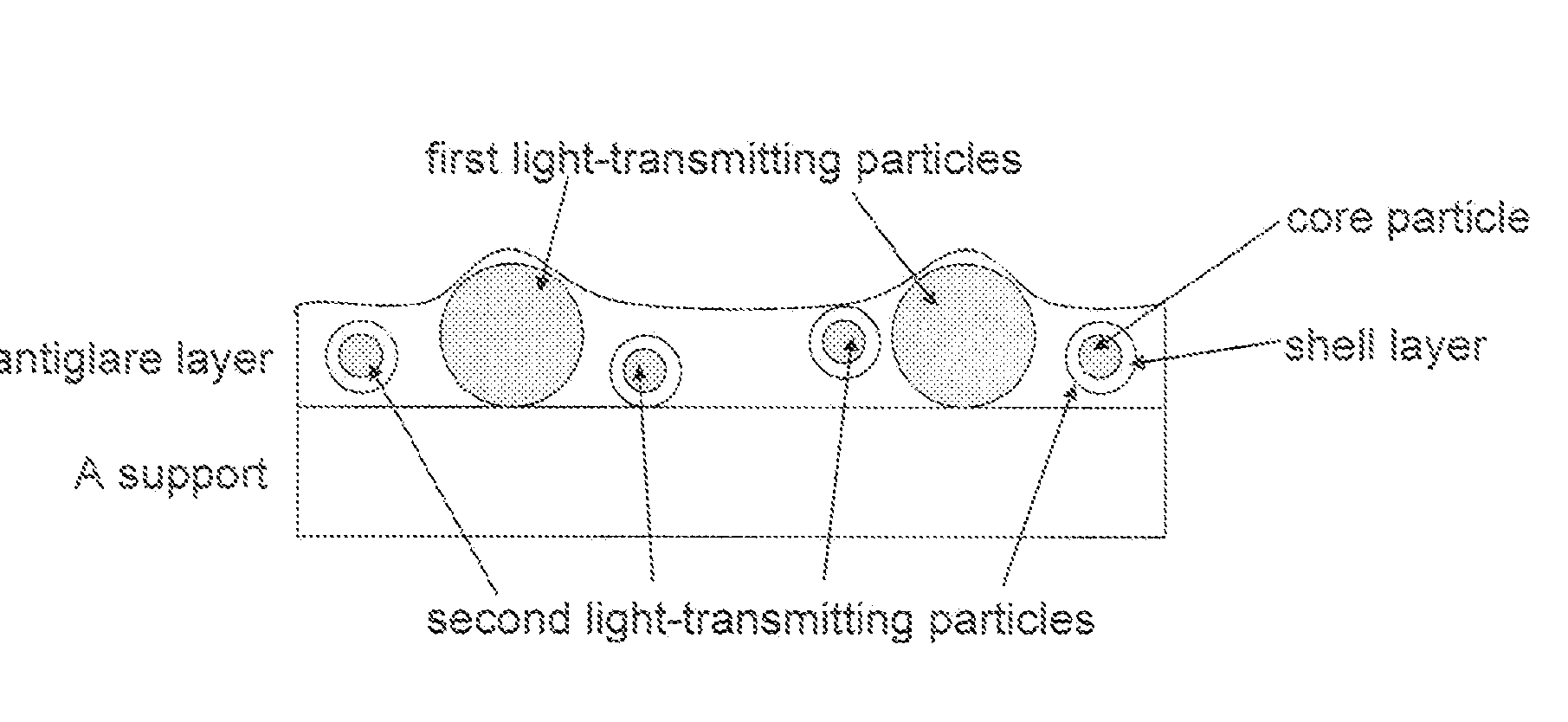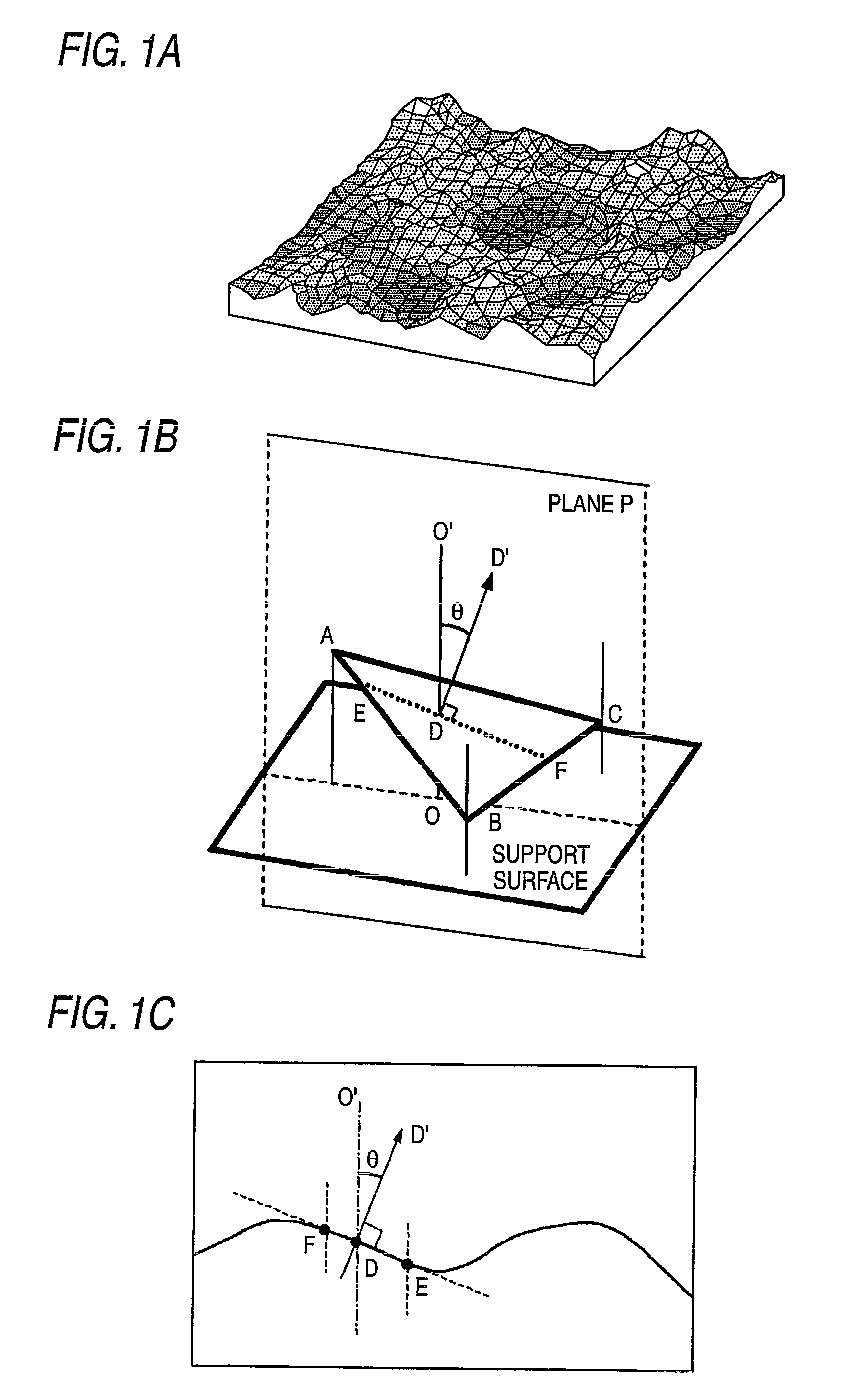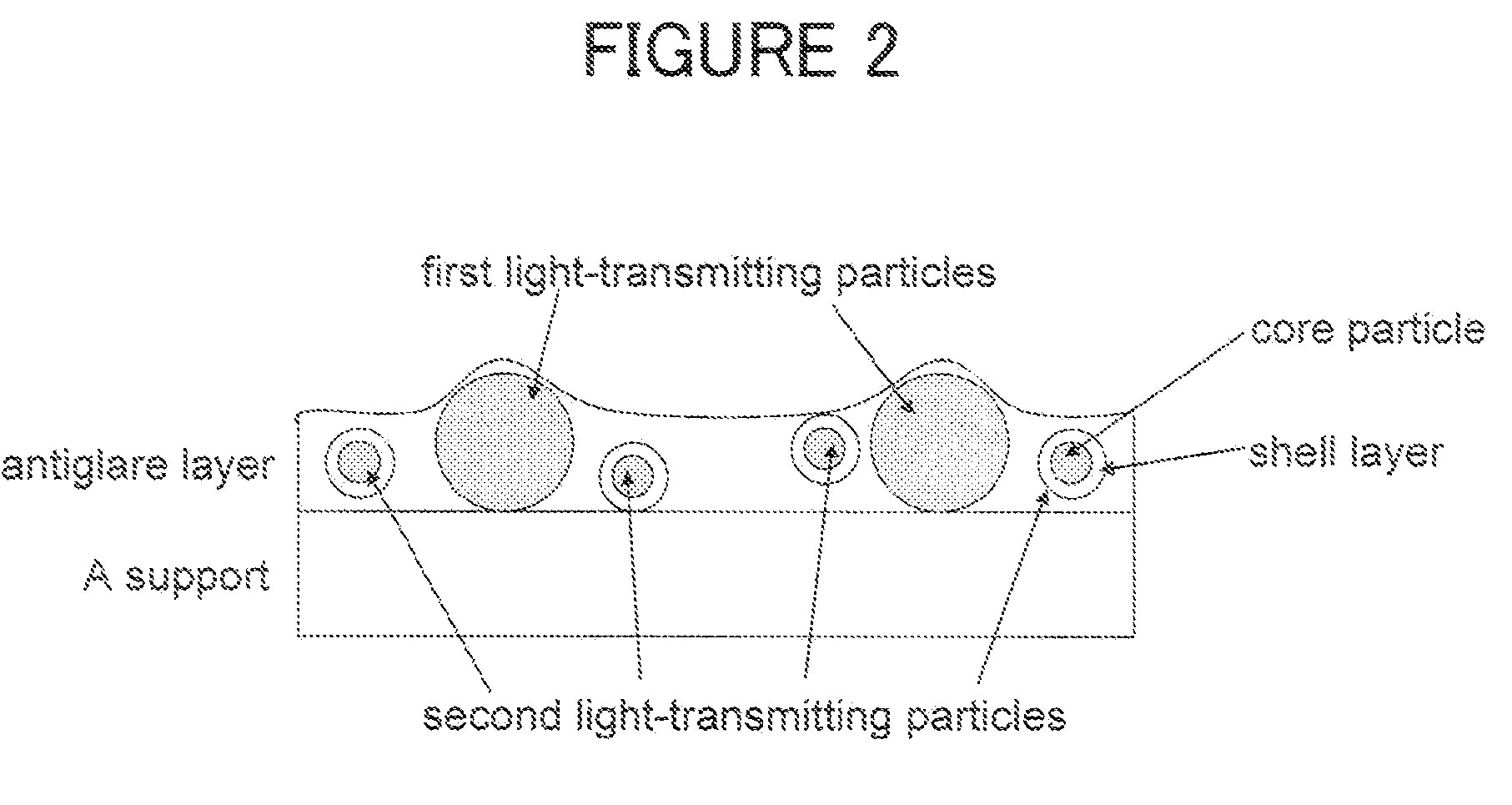Antiglare film, antireflective film, polarizing plate and image display device
a technology of anti-glare film and anti-glitter, which is applied in the direction of optics, instruments, optical elements, etc., can solve the problems of reducing display contrast, deteriorating deep black feel, and worsening of glitter traceable to lens effects produced by layer surface asperities, etc., to achieve excellent anti-glare and anti-glitter capabilities, and high density of black
- Summary
- Abstract
- Description
- Claims
- Application Information
AI Technical Summary
Benefits of technology
Problems solved by technology
Method used
Image
Examples
example 1
(1) Coating of Antiglare Layer:
[0256]While a roll of 80 μm-thick triacetyl cellulose film (TAC-TD80U, a product of FUJIFILM Corporation) was being wound off, each of the antiglare layer coating solutions shown in Table 2 was coated on the film in accordance with the die coating method using the slot die disclosed in Example 1 of JP-A-2006-122889. Herein, the coating operation was performed at a transport speed of 30 m / min, and the layer coated was dried at 60° C. for 150 seconds, and further cured by irradiation with ultraviolet light from a 160 W / cm air-cooled metal halide lamp (made by Eyegraphics Co., Ltd.) in an exposure dose of 100 mJ / cm2, at an illumination of 400 mW / cm2 under an atmosphere having an oxygen concentration reduced to about 0.1% by the purge using nitrogen, and then wound into a roll. Herein, the amount of each coating solution applied was adjusted so that the thickness of each antiglare layer formed became the value shown in Table 2. Thus, Samples 101 to 112 as ...
example 2
[0290]When each of the film samples made in Example 1 in accordance with the invention was bonded to the glass plate of an organic EL display surface via an adhesive, the amount of light reflected off the glass plate surface was reduced and the resultant display delivered better viewability.
example 3
[0291]A polarizing plate having on one side the antireflective film formed using each of the film samples made in Example 1 in accordance with the invention was made, and to the other side of the polarizing plate, or the side opposite to the antireflective film side, a λ / 4 plate was bonded. The thus made polarizing plate was bonded to the glass plate of an organic EL display surface so that the antireflective film lay at the topmost surface. As a result, surface reflections and reflections from the inside of the surface glass were cut, and the display extremely high in viewability was obtained.
[0292]According to the invention, an antiglare film having excellent anti-glare and anti-glitter properties and ensuring high denseness of black can be offered. And an antireflective film not only ensuring excellent anti-glare and anti-glitter properties and high denseness of black but also having low reflectance values can also be offered. Moreover, the invention can offer antireflective film...
PUM
| Property | Measurement | Unit |
|---|---|---|
| particle size | aaaaa | aaaaa |
| thickness | aaaaa | aaaaa |
| sizes | aaaaa | aaaaa |
Abstract
Description
Claims
Application Information
 Login to View More
Login to View More - R&D Engineer
- R&D Manager
- IP Professional
- Industry Leading Data Capabilities
- Powerful AI technology
- Patent DNA Extraction
Browse by: Latest US Patents, China's latest patents, Technical Efficacy Thesaurus, Application Domain, Technology Topic, Popular Technical Reports.
© 2024 PatSnap. All rights reserved.Legal|Privacy policy|Modern Slavery Act Transparency Statement|Sitemap|About US| Contact US: help@patsnap.com










